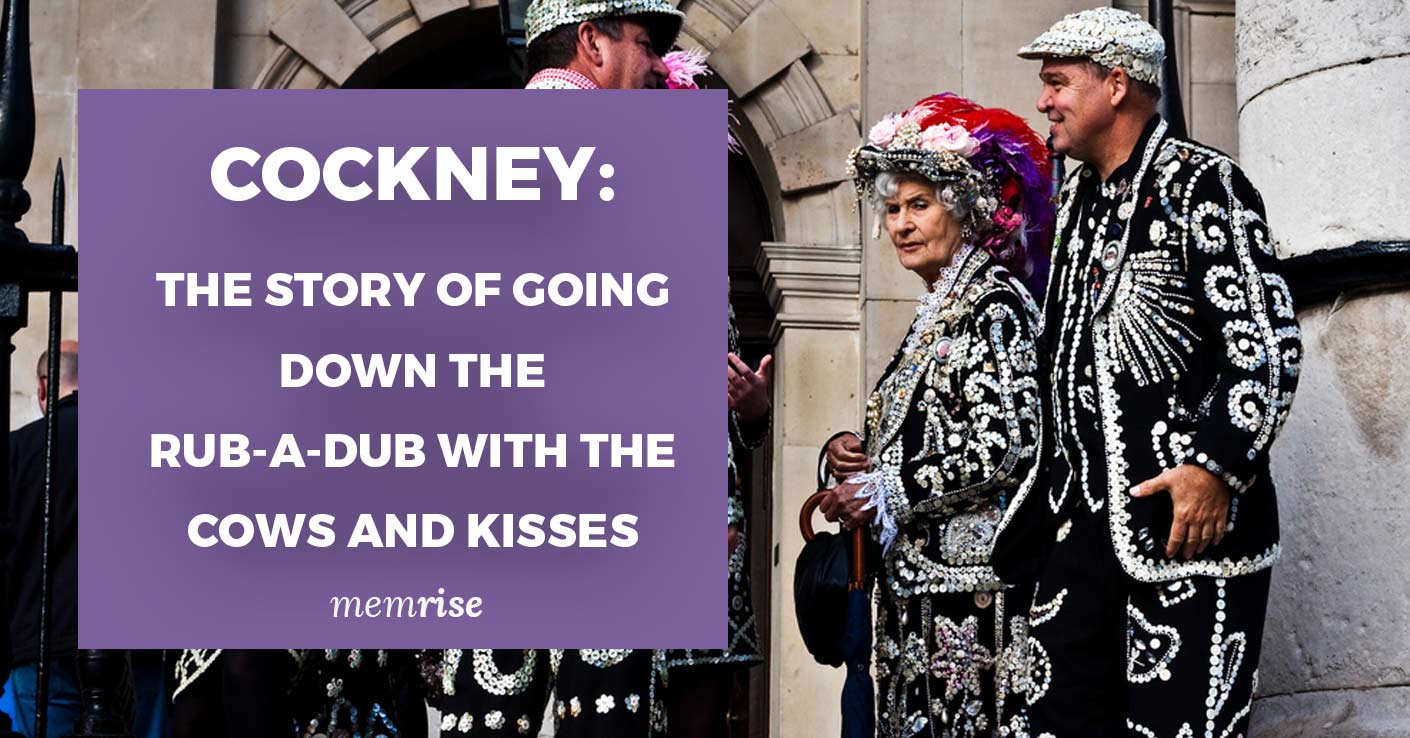The Memrise office is situated in the heart of the East End of London where, for the past few centuries, a curious dialect of English has been spoken. This dialect is characterised by its unique accent and rhyming slang.
Of course, we’re talking about Cockney. The word “cockney” first existed as far back as the 1300s CE, coming from the words ‘coken’ + ‘eye’, meaning ‘a cock’s egg’. Over time, people living in the countryside began to use this word to describe the “effeminate town-dwellers” of London, and by 1600 CE, the word was often being used pejoratively to refer specifically to ‘those people born within earshot of the Bow Bells’ – the bells of a church in East London called St. Mary-Le-Bow.
The typical Cockney accent has many features that make it stand out from other varieties of English, such as the dropping of ‘h’ and ‘t’ sounds, which makes ‘a happy cat’ sound more like ‘an ‘appy ca'” in Cockney.
London has long been a melting pot of different peoples, cultures, and languages. This meant that Cockney was able to borrow many different words from other languages that the East Enders came into contact with. Some examples are the word “shtum” meaning “quiet” from Yiddish, and “wonga” meaning “money” from the Romany word for “coal”.
And if that weren’t confusing enough, the Cockney dialect often makes use of its famous rhyming slang. Many words and phrases are regularly replaced with other words that rhyme with them, for example, a “tea leaf” is a “thief”, a “dog and bone” is a “phone”, the “cows and kisses” is the “missus (wife)”, and the “rub-a-dub” is the “pub”.
All this can make understanding Cockney a difficult task, but if you can master it, you will be sure to earn yourself lots of extra brownie points with the locals, as this Chinese tourist recently found out.
For a long time, the Cockney dialect has been perceived as the language of the working classes, and as such, many Cockney people have often felt the need to change the way they speak and adopt a different accent in order to give a good impression to those they meet and improve their job prospects. London’s house prices are constantly rising and many Cockneys are having to leave the East End in search of a cheaper place to live. This has unfortunately meant that it is becoming increasingly less common to hear the familiar sounds of the traditional East Ender accent spoken in London.
However, the fall of one dialect has also made room for a new version of English to arise: Multicultural London English. This new dialect is not only spoken in the East End, but by young, working class people of all ethnic backgrounds all over London.
So where has this new language come from? MLE is often referred to by the name “Jafaican” due to the fact that many people believe that it comes from the vernaculars of various Jamaican and Carribean communities in London. The truth, however, is that the roots of MLE are not as simple as that.
In the years following WWII, many people immigrated to the UK from Britain’s ex-colonies, and a large number of them settled in London, creating hugely diverse communities of people from every corner of the world, notably from Bangladesh, India, Pakistan, the Carribean, Hong Kong, and various African countries.
All of these people brought with them their own different cultures, cuisines, and languages. This diverse mix of languages and accents, along with London’s native dialects, such as Cockney, has come together to make Multicultural London English. See this video for a great example of MLE.










